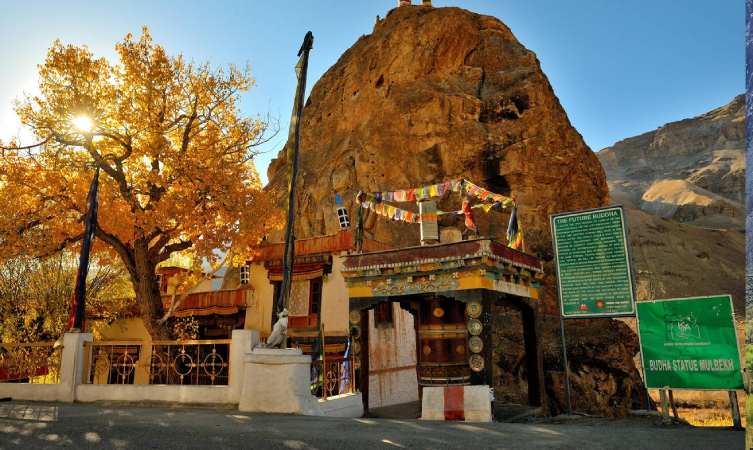
The Suru Valley is a valley in the Kargil District in the Union Territory of Ladakh, India. It is drained by the Suru River, a tributary of the Indus River. The valley's most significant town is Sankoo. Horses, yaks and other animals can be found in the valley.

Mulbekh Monastery or Mulbekh Gompa, at 11,495 ft from sea level and 656 ft uphill from road level, consists of a 9 m tall Maitreya Buddha statue, 1400 CE kharosti language edicts on the hill, and two 800-year-old gompas: Serdung gompa of Drukpa lineage and Rgaldan-se gompa of Gelugpa lineage of Buddhism.

Situated in the Drass village of Kargil district, this victory monument was built after the Indian Army pushed away the Pakistani troops and gained control over the region. This momentous victory in the battlefield was announced on 26th July 1999, which is celebrated as Vijay Diwas every year.

Drass valley posses many splendors of nature, some of its features got fame and were much focused in the Electronic Media during the Kargil Conflict of 1999. The war time topographies of Tololing, Tiger Hill and Mushko valley are places of attraction.

Known as the “Desert Wonder of Leh,” Hunder Village is nothing less than a stunning oasis tucked amidst the cold desert of the Nubra Valley in Ladakh. Home to the exotic double-humped Bactrian camels, majestic grey sand dunes and explore Ladakh holiday packages and immense natural beauty, the village, located at an altitude of 4,000 metres above the sea level, is a magical paradise.

Several treks original in and around Kargil, namely Lamayuru-Leh, Padum-Lamayuru, Padum-Hemis, Sankaru-Dras, NunKun etc. Trekking in the region may be challenging due to the weather conditions, but rewarding because of the beautiful setting of the region.

With a peculiar landscape on Leh-Kargil road, Lamayuru is a tiny village that's popularly known as the Moonland of Ladakh. Lamayuru is immensely popular for housing one of the oldest and largest monasteries in Ladakh. However, its claim to fame is accredited to the surreal breathtaking view of moonlike landscapes carved into the mountains.

Rangdum Gompa is an ancient Buddhist monastery located in the Kargil district of Ladakh, India. It is situated at an altitude of 4,031 meters above sea level, surrounded by the Himalayan mountains providing an enchanting view of the Zanskar and the Suru valley, and is home to around 40 monks.

Drass War Memorial is a small monument that commemorates the historic success of Operation Vijay during the Indo-Pak war of 1999. This war memorial is dedicated to all those martyrs who lost their lives while safeguarding the country against intruders.

The Munshi Aziz Bhat Museum of Central Asian And Kargil Trade Artefacts is a family-operated, public museum located in the town of Kargil, in the union territory of Ladakh, India. The museum has on display objects that circulated along the trade routes between Ladakh and Yarkand, as well as other are material relics.

rangdum Monastery is a Tibetan Buddhist monastery belonging to the Gelugpa sect, situated on top of a small but steep sugarloaf hill at an altitude of 4,031 m at the head of the Suru Valley, in Ladakh. It is next to the tiny village of Julidok, and about 25 km north of the 4,400 m Pensi La, which leads into Zanskar.

Sani, located about 9 km from Padum, is a typical Zanskari village. Peaceful and quiet with a few Ladakhi styled houses and even fewer people on the roads. We looked around the village as we approached our destination – the Sani Monastery.Sani Monastery is believed to be one of the oldest gompas in the Ladakh region. Infact, Sani is a place of interest for historians and archaeologists because of the ancient Kanika Stupa located inside the Sani Monastery.